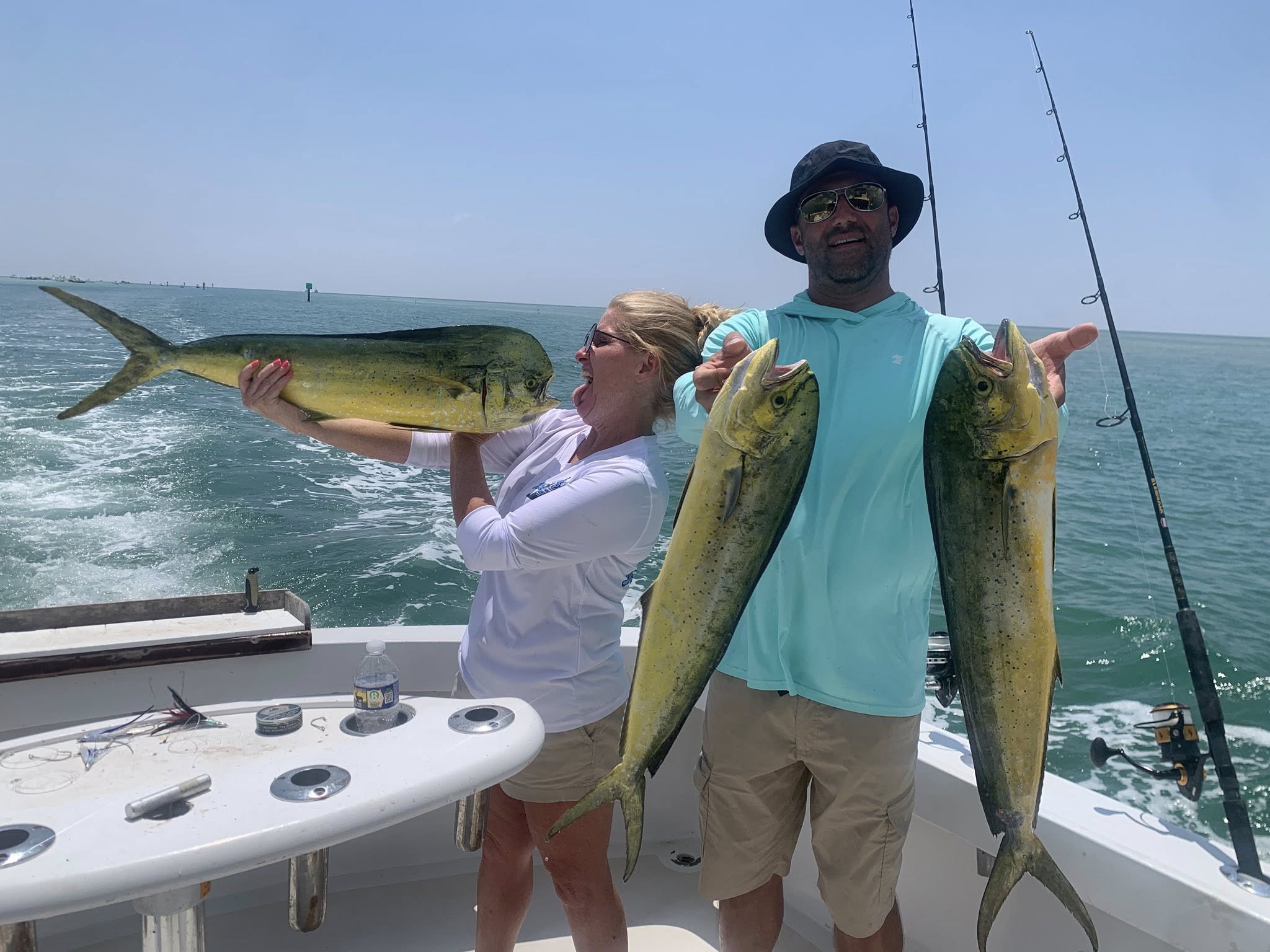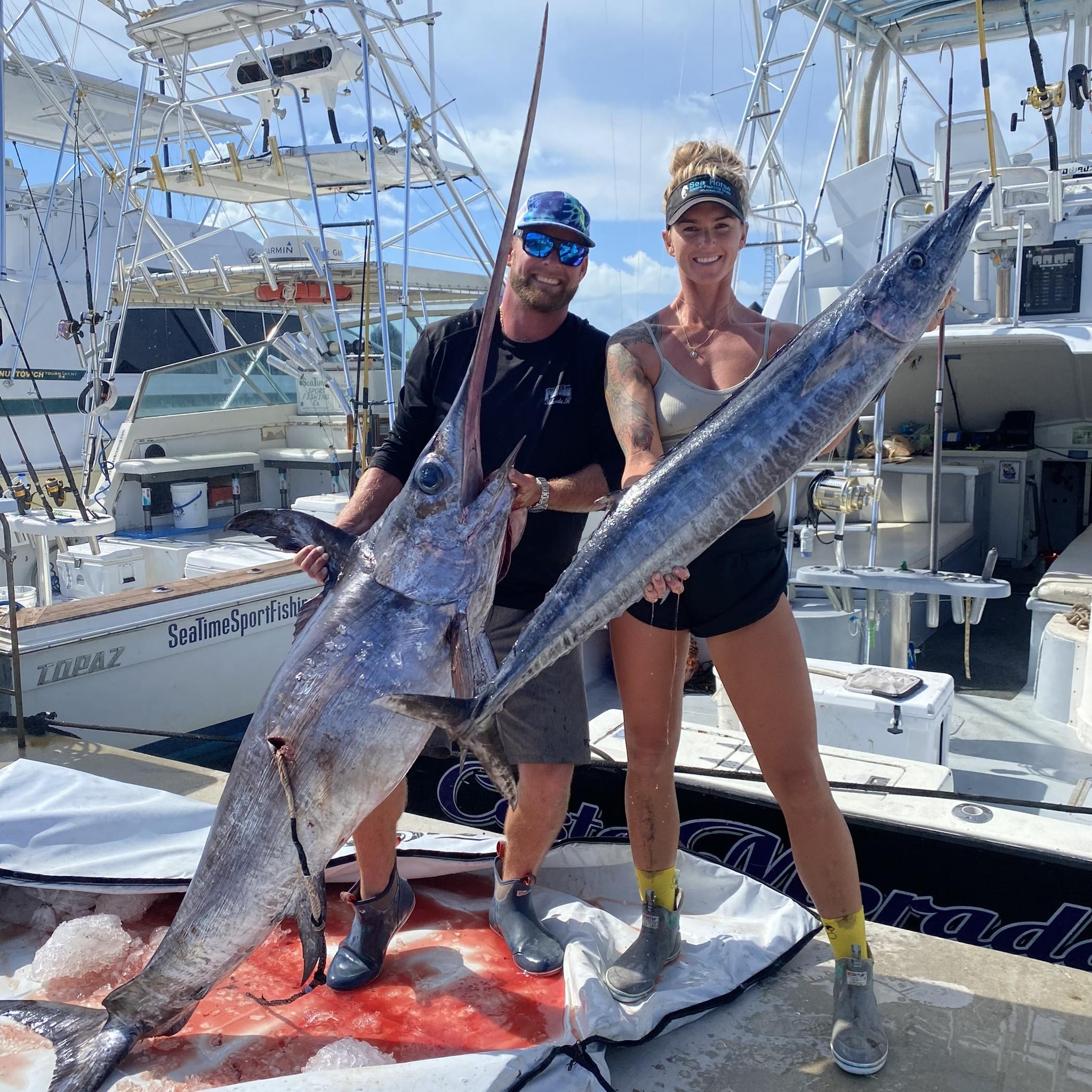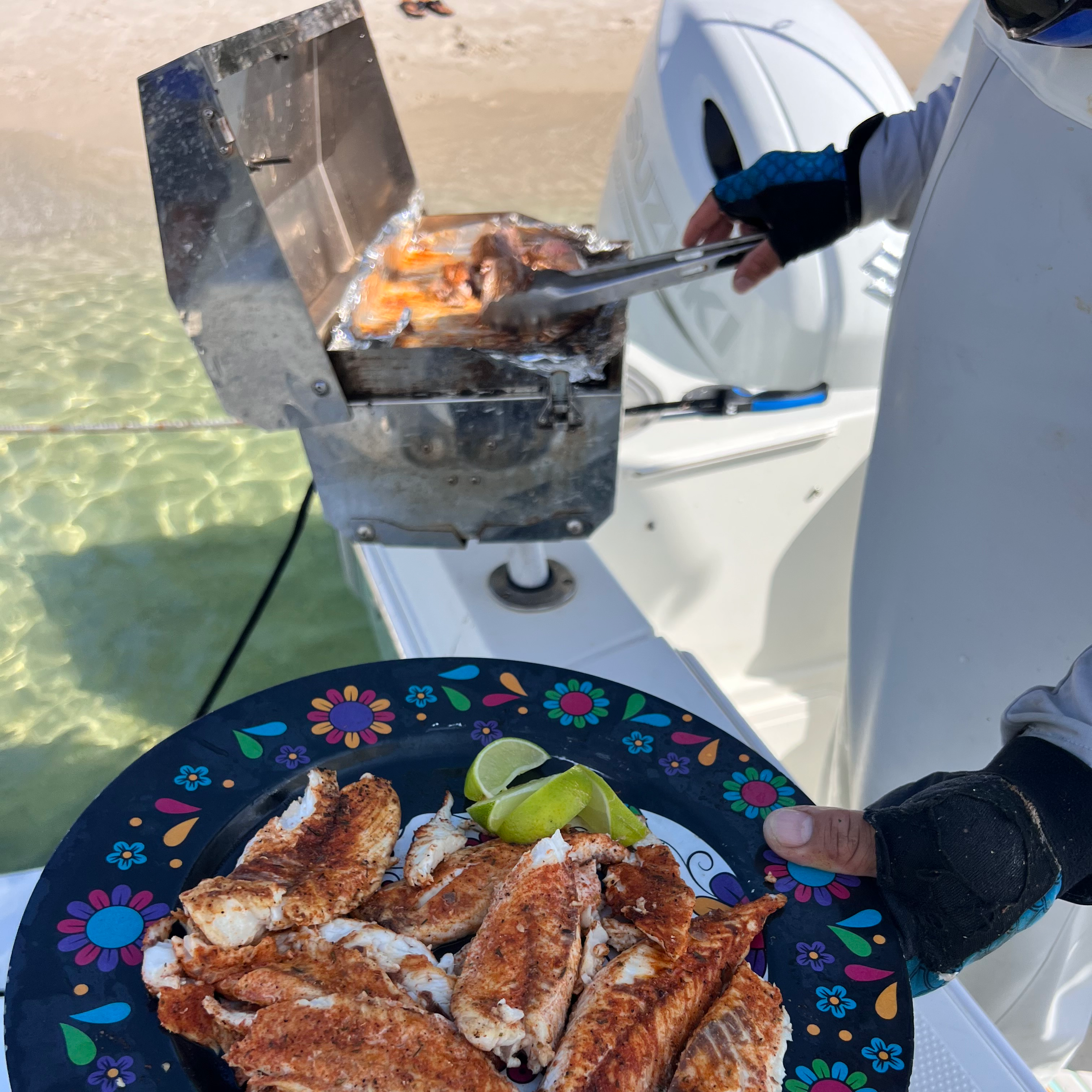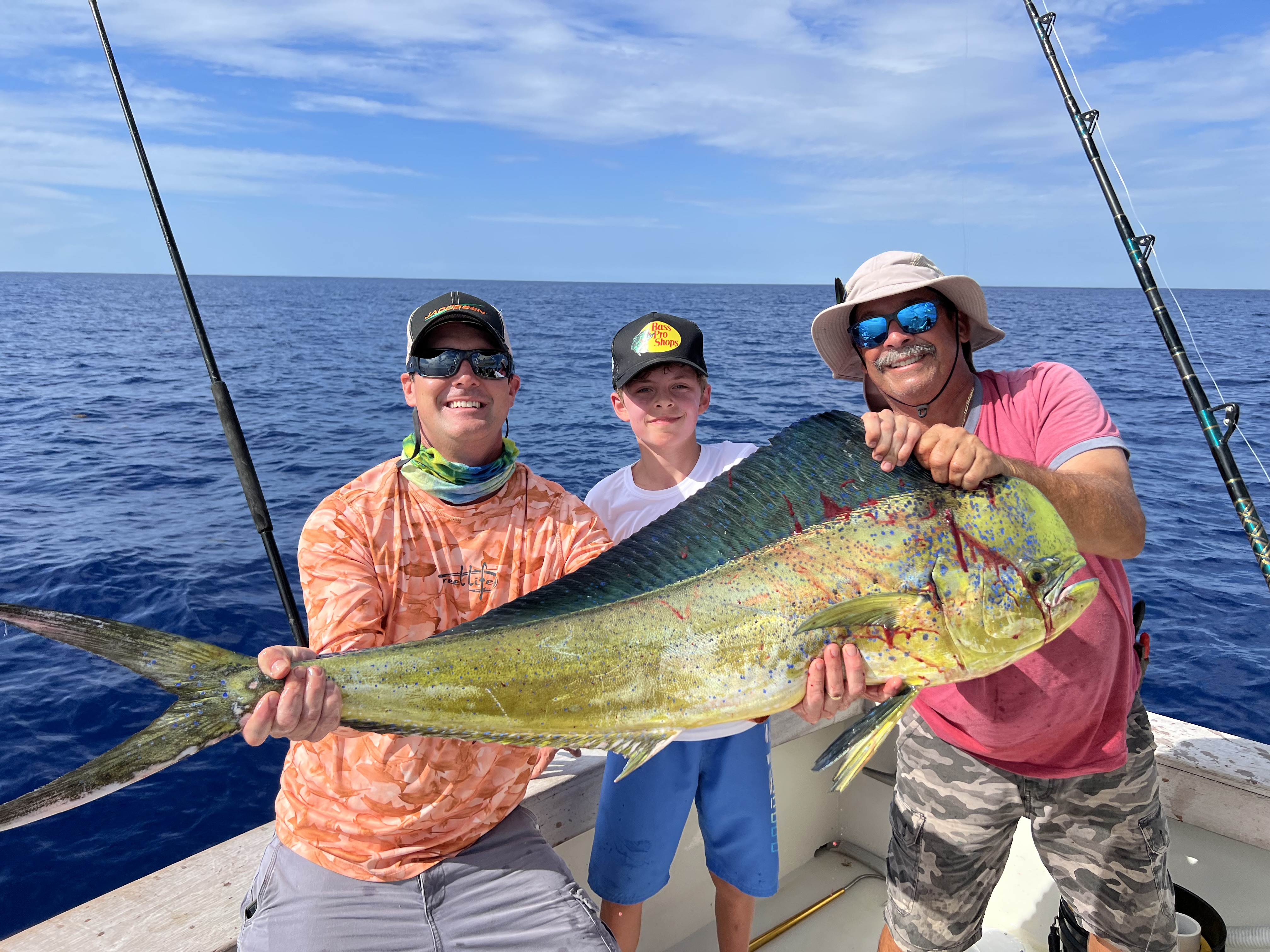Inshore, Deep Sea, Nearshore in Palm Beach Shores
Catching Fish And Having Fun
Deep Sea Fishing in Islamorada
8 Hour Full Day
Inshore, Deep Sea, Nearshore in Fort Lauderdale
Fort Lauderdale Offshore
Deep Sea, Nearshore, Jetty in Miami
Catch And Cook Sashimi/Grilled Fish
Deep Sea, Nearshore, Jetty in Miami
Miami Sport Fishing 🎣
Deep Sea, Nearshore, Jetty in Miami
Miami Sport Fishing 🎣
Deep Sea Fishing in West Palm Beach
Lip Rippin' Extravaganza
Deep Sea Fishing in West Palm Beach
Early Week Special!
Deep Sea, Nearshore Fishing in Coral Gables
Luxury Trolling, Kites, Bottom Fish
Deep Sea, Nearshore Fishing in Coral Gables
Luxury Troll, Kite, And Bottom Fish
We started Captain Experiences to make it easy to book fishing and hunting guides around the world. With over 2,000 Damn Good Guides, our platform makes finding and booking a trip seamless. Head here to check out our trips.
Guarantees are few and far between when you head out on the water, let alone miles offshore. All fish species can be fickle and disregard your bait for a variety of reasons, from the wrong presentation to poor visibility. Guides and captains know what works in their area well, but they come prepared with multiple options to offer fish when the bite is slow. Captain Rich out of Palm Beach, Florida explains how he runs offshore trips with efficiency to produce consistent bites. Let’s dive in.
Offshore Fishing to Maximize Opportunities
One of the most fundamental rules of fishing is to fish where the fish are. This is difficult enough when fishing small bodies of water, let alone a vast ocean. Offshore fishing requires anglers to cover a lot of water in order to have success. Trolling and Drifting are two common fishing styles that offshore anglers use to target pelagic species because of their ability to cover water.

Trolling
Trolling involves pulling lures behind a boat to imitate baitfish. Trolling can be a fun way to spend a day on the water because you just sit back, relax, and wait for a bite. Whether you're fishing from a small boat or a large one, trolling can be an effective way to catch saltwater fish. Trolling often employs planers or outriggers. Planers are devices that are used to increase the depth that your lure swims at. Outriggers, on the other hand, are long arms that extend off of the sides of the boat and allow lures to be spread across a wider area. Trolling, especially with the use of planers and outriggers, is an effective way to cover water and catch fish. Captain Rich typically will troll seven lures this way.
Drifting
Drift fishing can target a lot of water because it uses several baited lines spread out by various means. This spread of bait lines is pulled through the water as the boat is pushed by the wind and current. Offshore drift fishing gives anglers the ability to spread baits out vertically across varying depths and horizontally over a wider area. This is possible because of the three different ways the lines are set up which include bottom lines, flat lines, and kite fishing lines. Bottom lines are weighted and used to fish deep water, especially near reefs. Flat lines are suspended, lightly weighted, or free-floating to target the top or middle part of the water column.
Kite fishing is commonly done while drifting and uses a specially made kite to spread out live bait over a larger area while drifting. The kite is flown off of the boat and tied off at the desired height and baited lines are then clipped onto the kite line. As the baited line is let out the clip slides up the kite line pulling the bait further from the boat. This aerial approach makes the live bait splash on the surface. Captain Rich explains that kite fishing is “very visual because the kite enables us to keep the bait right on the surface and we see the strike.” This style of fishing is effective for catching mahi-mahi, blackfin tuna, king mackerel, and sailfish.
Captain Rich’s Efficient Fishing Trips
Captain Rich runs trips out of Palm Beach Shores, Florida which has easy access to the Gulf Stream. This massive current and its deep waters are known for holding incredible fish. The genius of his trips comes from the utilization of multiple fishing methods and the Gulf Stream current. The result is a well-engineered plan that covers an exceptional amount of water, offers a variety of bait presentations, and maximizes the time anglers spend fishing.
The first part of Rich’s trips are spent trolling south against the current. After trolling, the throttle is pulled back and the lines are reset for drifting. Bottom lines, flat lines, and if conditions allow, kite lines are set out to cover the largest area possible. The current pushes the boat along and the drift is timed to position the boat as close to the inlet as possible. This minimizes the duration of the return trip to the dock and keeps clients fishing for the maximum amount of time. Rich says “I can offer four-hour trips in Florida with 3.75 hours of fishing because it’s[starts and ends] just outside the inlet.”
The Benefits of Both
The approach Captain Rich uses offers other significant benefits over other, more monotonous trips. Trolling can cover a greater distance but lacks the deep lines used while drifting, offer opportunities for reef fish including amberjack, grouper, snapper, and many more. While drifting can cover every part of the water column, it burns valuable time on the way out, back, or both. Another advantage of Rich's fishing style is that by trolling and drifting, he can offer the fish a myriad of different baits. He adds “ I carry two or three types of live bait and three, four, or five types of frozen bait. It’s the easiest part of the whole deal, if I have plenty of bait I'm going to catch fish.”
The approach Captain Rich uses offers other significant benefits over other trips. Trolling can cover a greater distance while drifting, offers opportunities for reef fish including amberjack, grouper, snapper, and many more. While drifting can cover every part of the water column, it burns valuable time on the way out, back, or both. Another advantage of Rich's fishing style is that by trolling and drifting, he can offer the fish a myriad of different baits. He adds “ I carry two or three types of live bait and three, four, or five types of frozen bait. It’s the easiest part of the whole deal, if I have plenty of bait I'm going to catch fish.”
Fishing trips are an experience, and making sure the customers enjoy their time on the water is part of the equation. Captain Rich said “When we're trolling customers just sit back and wait for something to happen, but when we're drift fishing, they're very involved. They're tending all the lines with the mates which we enjoy tremendously, and the customers get a big kick out of it.” If you want to book a trip with Captain Rich in Palm Beach, Florida, you can find his trip listing here.
Joey Butrus
Updated on June 21, 2023

October 26, 2020

July 1, 2024

June 3, 2021

June 22, 2022

January 7, 2022
Related Articles
June 6, 2024
June 3, 2021
Featured Locations
- Fishing Charters Near Me
- Austin Fishing Guides
- Biloxi Fishing Charters
- Bradenton Fishing Charters
- Cabo San Lucas Fishing Charters
- Cancun Fishing Charters
- Cape Coral Fishing Charters
- Charleston Fishing Charters
- Clearwater Fishing Charters
- Corpus Christi Fishing Charters
- Crystal River Fishing Charters
- Dauphin Island Fishing Charters
- Daytona Beach Fishing Charters
- Destin Fishing Charters
- Fort Lauderdale Fishing Charters
- Fort Myers Fishing Charters
- Fort Walton Beach Fishing Charters
- Galveston Fishing Charters
- Gulf Shores Fishing Charters
- Hatteras Fishing Charters
- Hilton Head Fishing Charters
- Islamorada Fishing Charters
- Jacksonville Fishing Charters
- Jupiter Fishing Charters
- Key Largo Fishing Charters
- Key West Fishing Charters
- Kona Fishing Charters
- Lakeside Marblehead Fishing Charters
- Marathon Fishing Charters
- Marco Island Fishing Charters
- Miami Fishing Charters
- Montauk Fishing Charters
- Morehead City Fishing Charters
- Naples Fishing Charters
- New Orleans Fishing Charters
- New Smyrna Beach Fishing Charters
- Ocean City Fishing Charters
- Orange Beach Fishing Charters
- Panama City Beach Fishing Charters
- Pensacola Fishing Charters
- Pompano Beach Fishing Charters
- Port Aransas Fishing Charters
- Port Orange Fishing Charters
- Rockport Fishing Charters
- San Diego Fishing Charters
- San Juan Fishing Charters
- Sarasota Fishing Charters
- South Padre Island Fishing Charters
- St. Augustine Fishing Charters
- St. Petersburg Fishing Charters
- Tampa Fishing Charters
- Tarpon Springs Fishing Charters
- Venice Fishing Charters
- Virginia Beach Fishing Charters
- West Palm Beach Fishing Charters
- Wilmington Fishing Charters
- Wrightsville Beach Fishing Charters
































